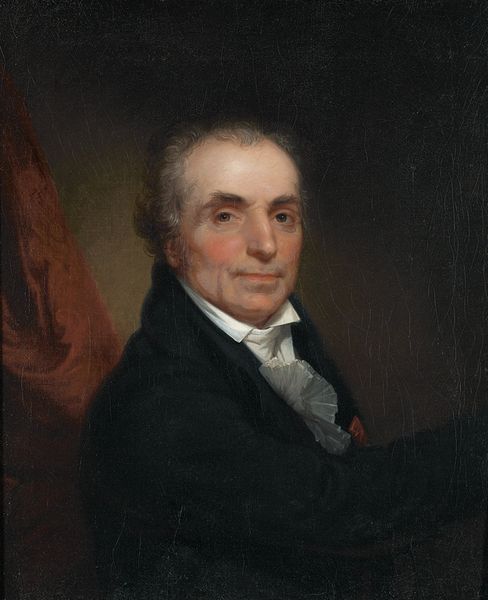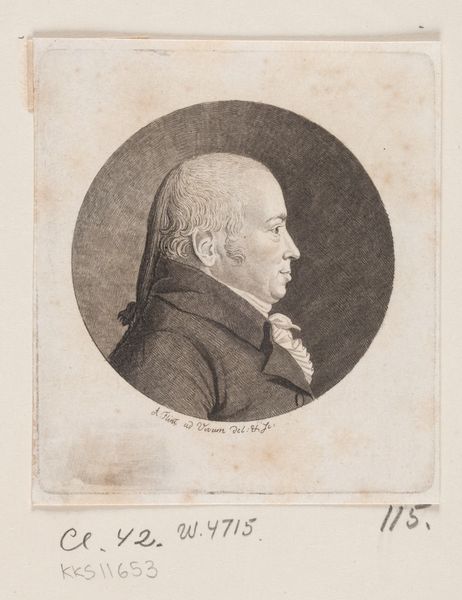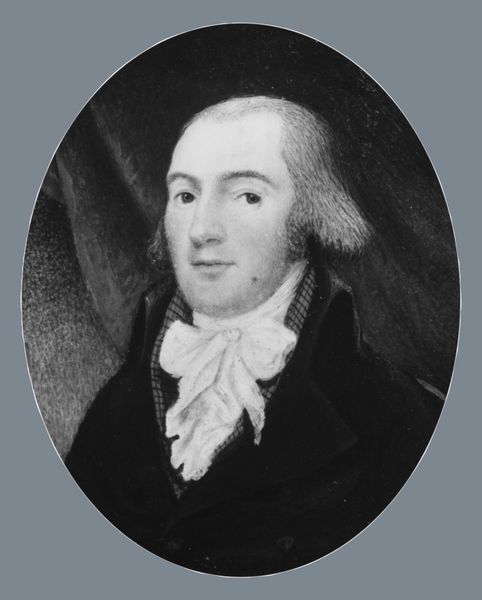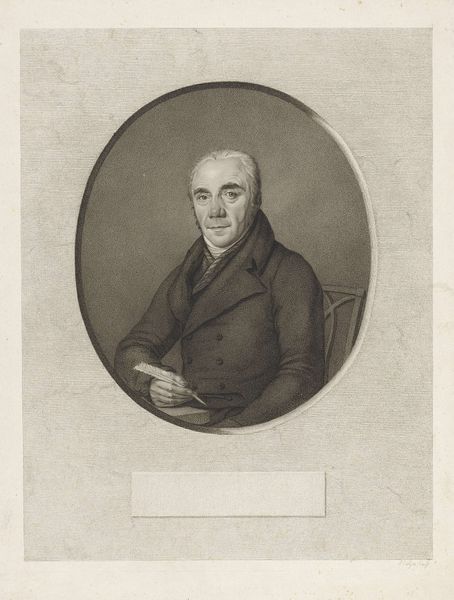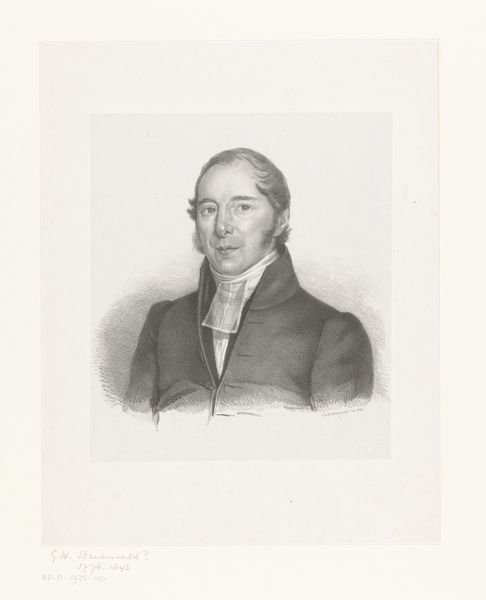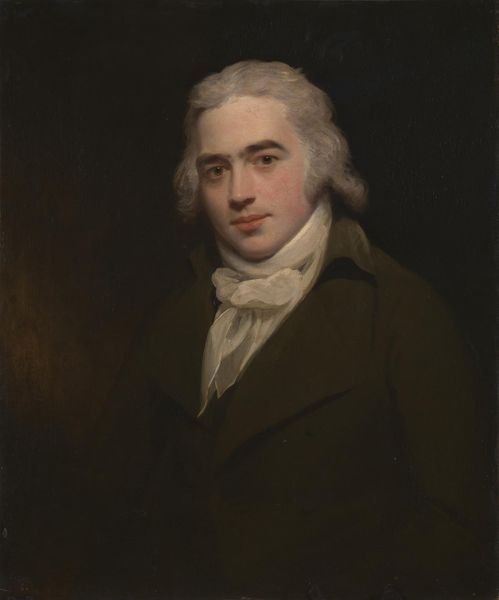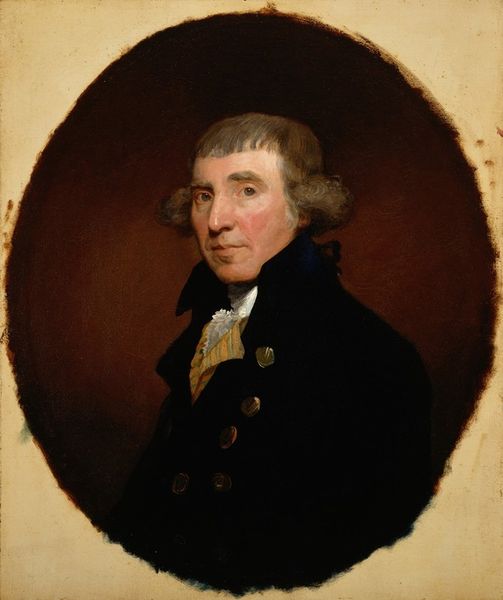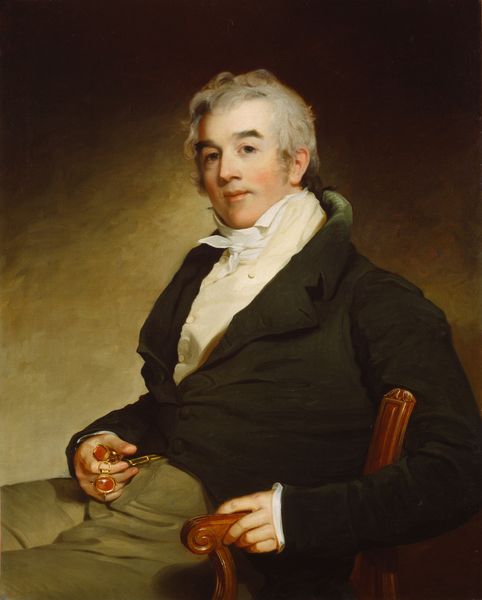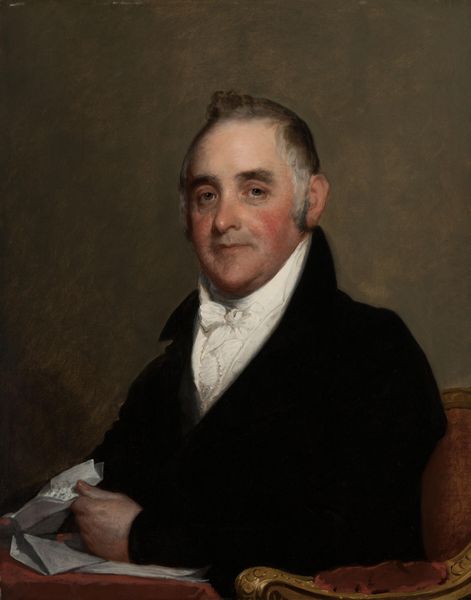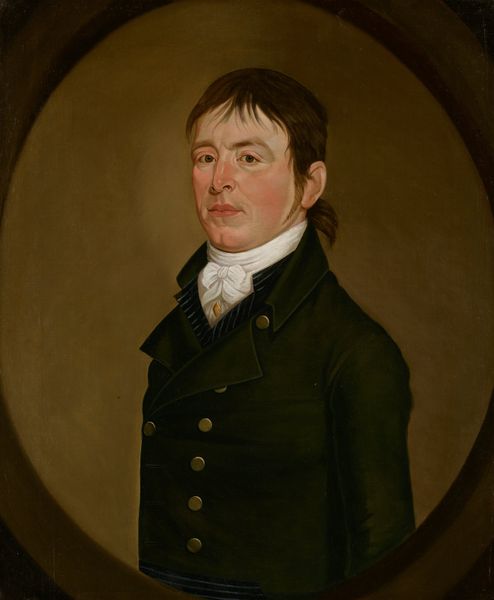
painting, oil-paint
#
portrait
#
painting
#
oil-paint
#
romanticism
#
academic-art
#
realism
Dimensions: 21 × 16.8 cm (8 1/4 × 6 5/8 in.)
Copyright: Public Domain
Curator: Painted between 1808 and 1810, we have "Mr. Benjamin Schaum" by Jacob Eichholtz. It’s an oil painting, currently residing here at the Art Institute of Chicago. Editor: There's a muted serenity about this piece; the palette is reserved, and the composition feels balanced and deliberate, an effect heightened by its oval shape. The brushstrokes look precise but almost clinical. Curator: The subdued tones do much to conjure the social standing of the subject. Consider that in early 19th-century America, portraiture signified wealth and status. Schaum is presented with a clear aim to convey respectability. He embodies a kind of new-republic sobriety. Editor: Interesting you mention sobriety. Look at how the dark coat anchors him, leading the eye upwards to that carefully knotted cravat and the profile bathed in light. I am drawn to the way that Eichholtz has deployed the tonal modulations on his face, creating this luminous effect, drawing attention to his expression which has a faint anxiety? Curator: Perhaps. Or perhaps that anxiety is the echo of larger anxieties. To me, it evokes the burgeoning market society and the shifting sands of identity in a new nation trying to forge its symbols and archetypes. The very pose—the averted gaze—can symbolize circumspection. A careful navigating of social and economic realities. Editor: And does that reading not somewhat diminish the painting to simply being a document of social anxiety? Shouldn't we appreciate, independently of any cultural interpretation, the sheer act of translating flesh to canvas with subtle application of tone? I almost find myself overlooking Schaum as a man, viewing him as pigment, line, form... Curator: I cannot separate the two. The line, form, pigment—they become elevated when we place them in cultural dialogue with our collective narrative. Even the portrait’s intimacy points to emerging ideals about individuality and representation, as each subject wants to express his or her own status or point of view. Editor: Point taken. But still, as I step back, I can see Eichholtz worked hard with his craft and deployed tone skillfully, offering me this strangely intimate encounter. Curator: And I find it rewarding that we both arrived at some interpretation through our unique lenses.
Comments
No comments
Be the first to comment and join the conversation on the ultimate creative platform.
